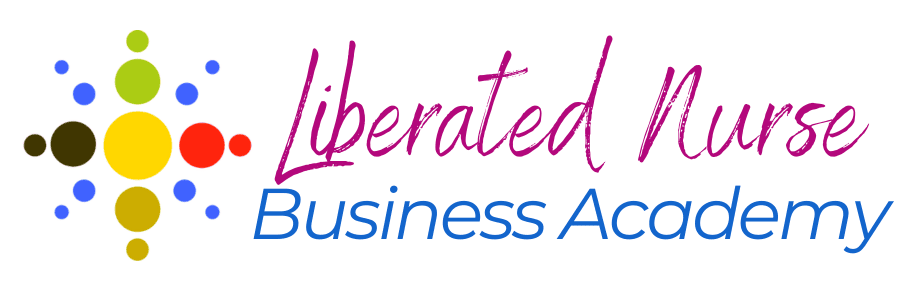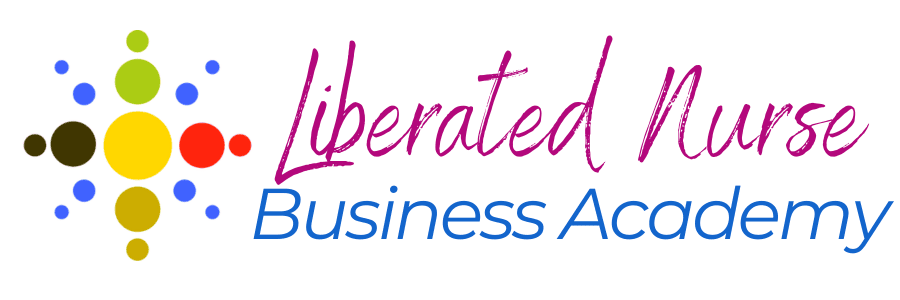For any real depth or meaning, choosing a marketing path should be guided individually based on your personality, audience, stage of business, and all the other things we’ve covered in the Incubator. Without that guidance, you can still survive, but your business growth and development will be much slower and more painful.
As nurses, we are naturally in the human relations business, so one of the best marketing paths for us is what some people call “Conversational Marketing.” This means talking to your audience through marketing, just like in person. It applies to social media posts, paid ads, website content, email content, videos, networking, and all the rest.
Networking
Let’s start with networking because, for most of us, this is where we’ll get the best return on our efforts. For networking, we are going to events to connect with other people in our area of interest or who are “hubs” of people in our audience. How can we do this most effectively?
Secret #1: Go with a friend or colleague. A friend can talk you up in a way that you cannot talk about yourself, and you can rave about your friend in ways they cannot. If you go with each other, you can promote each other, which is a fun way to do it.
Secret #2: Network for Hubs. I learned this secret from Bill Baren, a brilliant mentor to many people who are now business mentors. He said, “Don’t go networking for clients. Go networking for hubs.”
When you think about events, it’s better to go where there are people who are hubs of connections to lots of your clients and build connections with those hubs. Learning to do it well is like parachuting to the top of a mountain instead of climbing it rock by rock.
My best tip for starting this approach is to introduce yourself without needing to get anything from the hub person. Have a little bit of face time and a friendly personal connection. This does a ton in terms of the follow-up later.
Follow the model set by people like Phoenix Rudner, a realtor who focused on pet owners. Instead of thinking about where pet owners hang out, he could ask, “Where do all the hubs of pet owners hang out? Where do all these hubs get together in one place, where I could just go to one event and meet many folks?” This approach will dramatically leverage your time and energy.
Secret #3: Get their card. Do not just give your card to them, but get theirs, too. I often see people making mistakes with this. They go to networking events and run around giving out their business cards. It looks like they are accomplishing something, but most people will get home and have no idea who gave them the cards they got that night. Then, they will throw away the cards because they cannot remember who the cards are from.
I recommend waiting to make a business card until you are already making money. If you do not have a card, when people ask you for one, you can say, “No, do you have one?” and then receive their card.
This approach allows you to note something appropriate to send them, such as a blog post, a video, etc.- something useful that would start the relationship by being thoughtful and generous.
So, applying this to networking events, I would get their cards and leave with eight to ten cards. Leaving with ten hub cards you can follow up with is much more powerful than giving out 50 to 100 business cards!
Another approach is 1:1 networking. Have lunch or coffee with people you already know. Just make your intention clear by saying something like, “I’d love to catch up with you and share what I’ve decided to do with my business,” or “I could really use some advice about such-and-such,” or “I want to do some marketing, and I want to talk to you about introducing me to your such-and-such.”
Yes, sometimes, if I am going to meet with somebody, I will say, “Hey, we should go for coffee. It seems there might be a few ways we could support each other. I’m not sure how yet, but how about we grab a quick 30-minute coffee and explore that?”
Then, you can have a more personal conversation, which is much better for growing your business.
When you attend an event with many people, see if you can meet a significant hub or connection. Then, set up a one-on-one meeting after the event.
Secret #4: Have a business card that works for you. When you are ready for a business card, two things are vital.
Have a current, awesome personal photo on it. People get so many cards, and they usually won’t remember who it is from, but if there is a photo of you, they can say, “Oh, yes, it is that person.” It helps more than you might think.
Use the back of your card to give them a “pink spoon,” like the free taste in an ice cream store. Invite them to your website, where they can opt-in for a gift and get acquainted with you at their own pace. Keep the URL simple, like (yourdomain).com/free.
Ideally, the gift is online: an audio, video, PDF, quiz, or email series, and it will help the person check you out from a distance without having to book anything. Make it no risk for them and no effort for you.
Can the pink spoon be a small discount on your service? It can, but that is less pink-spoonish.
If you want to learn more about this approach, I recommend a brilliant piece by Seth Godin on being a Generosity-Based Business and the importance of Pink Spoons. You can Google it.
While you are at it, notice that free is not always generous. Sometimes, “free” can be an ultimately selfish move. A generous gift comes with no transaction anticipated, changes your approach to the market, changes your relationship with the recipient, and can even change you.
Social Media Marketing
It’s easy to find advice about social media marketing. Just be sure to look closely at the details about what is involved to get a good return on your investment of time, energy, and money.
I have little to say about social media marketing because I have not found a method that works for me. My general advice is to choose ONE media channel (Instagram, Facebook, LinkedIn, YouTube, Twitter, TikTok, or whatever), consistently post content your audience values, and do not spend money on ads until you have grown a strong following that engages with your content.
It’s crucial to know what you're doing when you start spending money on social media ads. Otherwise, you'll likely receive a poor return on your investment.
I have consistently posted content and ads for another company that was paying me to do its marketing. However, I have not had enough success to say it was worth my time and energy. Other paths, like the ones I wrote about above, have been far more fruitful. This may be because I do not like social media much. So, if it works for you, that’s great.
One exception is that I did a few Facebook Lives last year, and there was much more engagement with them than I expected.
I post videos on YouTube when I have something to say. I enjoy watching YouTube videos, and I have gained a lot from them, so I am happy to add to that pool.
Email Marketing Tips
Do you receive way more emails than you read? Everyone does. However, that does not mean we don’t read any emails. We read them when we think there might be something worth our attention.
I encourage you to email the people on your list when you have something to say that will benefit your audience. While some marketing mentors teach you to send emails as often as daily or multiple times a day during a product launch, I find that annoying. No one has that much to say that is worth that much of my time, not even my family members.
In my opinion, quality is more important than quantity when it comes to emails. Here are a few other tips.
First and foremost, email marketing is a conversation. Email is uniquely 1:1. Even if you send the same message to 1000 people, always remember you are writing to another human being. If you ask questions and your readers answer, acknowledge those readers and continue the conversations.
Email’s biggest advantage is that you can automate it. You can personalize your messages, deliver them at scale, track your audience’s actions, use automated workflows, and generate data that will help you better understand your customer’s problems and preferences.You can then build your marketing strategy around those relationships. Several systems can do this for you. I have used MailChimp, AWeber, Constant Contact, Infusionsoft/Keap, MailerLite, and Systeme.io. I recommend Systeme because it is easy, includes everything you need to create and send emails to your audience, set up automated follow-up email sequences, create a website, create courses, manage affiliates, track data... and they offer free and low-cost versions for small start-up businesses! Click here to learn more.
Post-sale marketing. Building a relationship with your audience is a process; a sale is not the end of communicating with your customers. It’s important to continue the conversation with your customers after the sale and give them the tools to spread the love about your business. If your customers love your product or service, they'll come back and/or might recommend it to their friends.
Sponsored emails. If you enjoy writing and can provide content that is valuable to your audience, it has the potential to become a stand-alone business. For example, if your newsletter has a large and loyal audience, you can look into sponsorship opportunities or other ways to monetize your email content. Another approach is to provide exclusive content to the subscribers that support you financially. If that interests you, check out 88 Cups of Tea, an online platform and podcast for creative writers that offers special content for those who support them on the crowdfunding platform Patreon.
Conclusion
The purpose of marketing is to create awareness of your services, nurture a relationship with your audience, and provide a user-friendly pathway through which people can buy the value you provide.
Approaching marketing with generosity and a focus on genuine connection will yield the most fruitful results. While various strategies, such as social media and email marketing, can be effective, it’s crucial to tailor your approach to your strengths, audience, and business goals.
Nurse entrepreneurs can effectively grow their businesses by focusing on conversational marketing, building strong networks, and prioritizing quality interactions.


